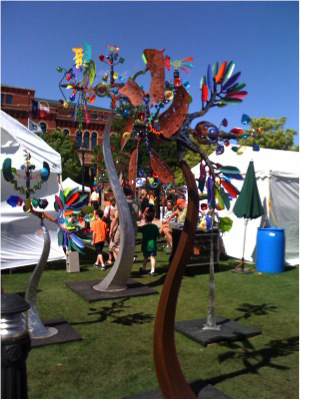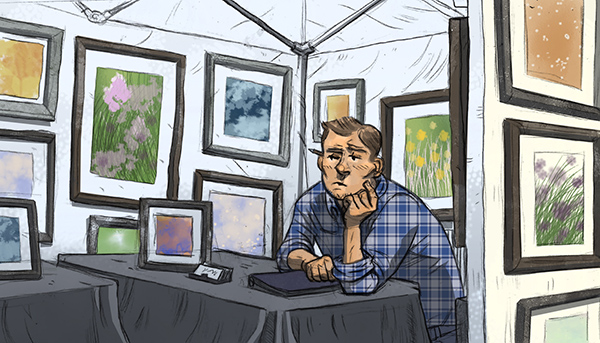If You Fail To Capture Contact Information From Prospects,
You’re Killing Future Sales—And You Don’t Even Know It.
Written by Rich Harshaw.
A few years ago, a guy from a local Chipotle knock-off called “Planet Burrito” dumped a stack of coupons off at my office. Each paper in the stack actually included three separate coupons… two of them were for “Buy One Get One Free” and the other for “Free Entree With Drink Purchase.” Since their burritos cost about $7 each, the coupons were actually worth quite a bit. In fact, the bearer of the “Free Entree With Drink” coupon could actually walk in there and eat a full meal (with a drink, of course!) for a paltry $1.66 including tax.
So what did we do? Naturally, half my staff and I ate at Planet Burrito for free or half-price for most of the next month. It wasn’t our fault the guy gave us practically infinite coupons. We actually started to feel a little bit guilty. Especially when we looked around and saw that most of the other customers were getting out of there for less than two bucks.
So… did Planet Burrito ever once ask me for my name, address, or email? Of course not! They did have an offer on the back of the coupons for a free cruise drawing. Unfortunately, the part where you fill in your name was opposite of the coupons that the cashier would tear off (leaving nowhere to write your name if you did want to enter the drawing), and the cashier never did ask us to fill anything out.
Essentially, they gave us $7 every time we came in there and didn’t bother to add us to their database. That’s pure stupidity.
How easy would it have been for the cashier to say, “Hey guys, thanks for coming in and trying us out with these coupons. We really appreciate your business. Would you mind doing me a favor? If you’d just take a minute and fill out this card, two really cool things are going to happen. Number one, we’ll automatically put you in a drawing for a free cruise that we’re holding next month (points to poster of cruise giveaway). Second, we’ll send you additional coupons in the future via email and/or text message. There are pens on every table; if it’s okay, Jill (pointing at Jill) will come by in a minute and get those from you.”
What percentage of customers would take the time to actually fill the dumb thing out? My best guess is about 70% to 80%. Look at the dynamics: We just gave them a lot of free stuff ($7 worth), I’ve promised to give them more valuable stuff, I’ve said it in a friendly, non-threatening way at the POINT OF SALE, and I’ve made it easy to comply with (with the cards, the pens, and the fictitious Jill).
Assume for a minute that over the course of a month, they could get 1,000 people to fill in the card. Then the next month, instead of scratching their head and trying to figure out how to get more new people into the restaurant, they could leverage their database and email and/or text offers to the people who already know them, ostensibly like them, and probably would come back again, if prodded. It’s too easy.
As it is, they had no idea who I was even though they gave me $49 worth of free food in a month. So sad.
There’s A Reason Those Artists Are Starving
On a related note, my oldest daughter is an outstanding budding artist; she’s really good. So when she asked me to take her to a local art festival, “Art In The Square,” on a Saturday after lunch, I said, “Let’s go.” The weather was perfect and the place was jam-packed with hundreds of local lookers. As we meandered from booth to booth checking out everything from wicked cool windmills to unbelievable oil paintings, I overheard one of the artists tell someone that he “did thirty-five of these shows a year and covered 45,000 miles to do it.”
Holy crap. That’s not a weekend hobby. That’s a lifestyle.
And this wasn’t a bunch “starving artists” selling junk, either. These were professional artists with really good stuff with price tags to prove it. But in the two hours we were there, I only saw one person carrying a purchased painting under their arm, and I didn’t see anyone else who appeared to be in “seriously ready to buy something” mode. It was, it seemed, a festival full of window shoppers, price gawkers, and lookie-loos.
Which shouldn’t be all that surprising. After all, how many of those tire kickers do you think had been waiting all year for the art festival to show up so they could run down there and buy their own personal Picasso? I’m guessing basically none of them. Most of us—take me, for instance—didn’t even know the darn thing was going on until fifty-seven minutes before we showed up. Even though I saw several artists’ work that I found to be interesting, I simply wasn’t ready to plunk down $450 to $7,500 on an impulse buy.
So did the art show organizers or the artists themselves make it easy for me to find them and sample their wares later? Of course not! That would make too much sense! Nobody had a card to fill in. Nobody offered a postcard-sized print of their work with a web address on the back for future browsing. Nobody had a contest for a free print (so that names and email address could be collected). They all simply hoped and prayed that I’d whip out my checkbook on the spot and give them money—essentially on a whim. Talk about underleveraged.
And that wasn’t the worst of it. The festival organizers did no favors for the road-weary artists, either. There was no printed guide available at the show to tell me which artists were where and what they did. There was no list of names. There was no contact information. There was nothing. Even the organizer’s website (which I had to Google to find) only had a listing by names—but no links to artist websites, no way to tell which artist was which. Nothing. Useless. Worthless. Highly disappointing. And extremely underleveraged. I couldn’t even figure out which artist had the wicked cool windmills to show you. Sorry, their bad. You’ll have to settle for my crummy phone picture.

Major marketing mistake #4 is failure to have an offer. And it is killing these guys. A very simple strategy of postcard-sized prints or even a mini-catalog of their art would allow these guys to build up an email list of (I’m guessing here) 200 to 500 people per show that cared enough about that particular artist’s stuff to fork over their contact information. Multiply that by thirty-five shows a year and you’re talking 7,000 to 17,500 people on an email list… or Facebook fans. They could be sent special offers. They could be sent paintings of the week. They could be reminded NEXT YEAR when the art show returned—thereby guaranteeing bigger on-site sales from email recipients who would then be actually anticipating their return… and showing up with that fat wallet, ready and eager to buy.
On the other hand, maybe they really are (truly) starving artists—and prefer to stay that way.
Either way, the moral of these two sad stories—free burritos and starving artists—is the same: do whatever you can to build your mailing list (or email or Facebook or whatever) as big as possible so you can continue to PRO-ACTIVELY market to your prospective customers from now until the end of time. Realize that not everyone is ready to buy RIGHT NOW… some will need days or weeks or months or YEARS before they are ready to buy. Your job is to identify them, give them an incentive to give you their contact information, then follow up like crazy—FOREVER.
© 2014 – 2016, Rich Harshaw. All rights reserved.








